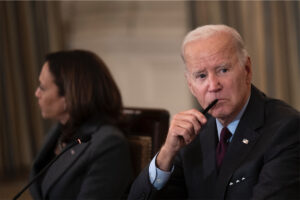Robert Mayfield took over his family business in 1979 and has, in pursuit of his entrepreneurial dreams, grown it exponentially ever since. Today, his company, R.U.M. Enterprises, Inc., runs 13 high-performing Dairy Queen restaurants and a Wally’s Burger Express in the Austin, Texas, area, and employs more than 350 people who Robert considers his “work family.”
Robert attributes his company’s success to an emphasis on superior customer service, competitive wages and salaries to recruit and retain top talent, and an enterprising philosophy that’s enabled him to cultivate a valued management team from within.
To compete for workers, R.U.M. pays hourly employees starting rates of $15 per hour, well above state and federal minimum wage. Those that advance to management positions are moved to a salary package, which includes opportunities for bonuses to incentivize high performance. That’s what Robert has found is necessary to develop and promote talented managers.
Instead of allowing business owners like Robert the flexibility to grow and operate their businesses as they would like, the U.S. Department of Labor (DOL) shoehorns their management employees into a one-size-fits-all salary level rule in defiance of the existing statute.
When Congress enacted the Fair Labor Standards Act in 1938, it established a default rule that employees are to be paid on an hourly basis. But the law carved out numerous exemptions for specific types of work. Exempt workers may be paid a set salary, rather than hassle with the unpredictability of hourly pay, and avoid the nuisance of logging every minute of their workday. The most invoked exemption is the one Congress created for “bona fide executive, administrative, or professional (EAP) employees.” But remarkably, the statute does not define those terms. Instead, Congress left it to the Secretary of Labor to “define and delimit” the scope of the EAP exemption.
The Department of Labor allows the exemption for executive, administrative, or professional employee only if they are performing the right duties and are paid a salary, and at a level of at least $35,548. But while the statute plainly requires that the exemption should apply to employees performing executive, administrative, and professional duties, it says nothing about required salary levels. There is no hint that Congress intended to give the Secretary of Labor power to tell employers what sort of salaries they must pay these employees.
The exemption was supposed to cover all white-collar workers performing executive, administrative or professional functions. But the DOL reasons that if employees are paid too low they aren’t likely working those duties. For this reason, the DOL traditionally set its salary level requirement so as to allow most workers performing EAP duties to be deemed exempt. But the DOL has steadily increased its required salary level over time to exclude more workers. The most recent rule raised the salary level requirement by 50% in 2019. Under that rule, the DOL excluded 20% of EAP employees from the exemption because employers must now pay executive, administrative, and professional employees at least $35,568 per year.
But the Secretary of Labor does not have the legal authority to impose a minimum salary requirement for exempt workers in the first place, because nothing in the statute implies that Congress was authorizing him to dictate salary levels. And even if Congress gave that authority, there would be a constitutional problem, because the law must give some sort of direction to the Secretary of Labor as to where to draw the line if he is authorized to impose salary requirements.
Robert has long been frustrated by the DOL’s rigid salary level requirements. He’s forced to pay higher base salaries when he’d rather structure compensation to allow his management team to bring home greater incentive pay, in the form of bonuses tied to company profits.
Robert has written comment letters opposing each of the DOL’s proposed rule changes since 2004, to no avail. And so far, R.U.M. has absorbed the costs of higher salary mandates, which means his management team brings home less in bonuses, which represent a share of company profits. Now, the DOL’s regulatory agenda forecasts that the agency intends to propose yet another salary level rule that promises to exacerbate issues for R.U.M. Some have suggested that the new salary floor could be as high as $70,000 per year. If these forecasts prove correct, the new rule would force Robert to convert some of his managers to hourly workers who would no longer be eligible for the performance bonuses they now receive. Other restructuring decisions could follow and further harm his work family by forcing him to reclassify managers as hourly employees, which would also mean eliminating their bonuses.
The rules for hourly workers inhibit the managerial mindset that Robert wants to foster in his management team, because an hourly worker is focused more on the clock than on the goal of getting the job done right, as efficiently as possible. In Robert’s experience, management employees want flexibility and opportunity for growth, rather than rules that restrict professional development. They want opportunities to prove themselves—and to share in the company’s success.
It’s clear that the DOL’s regulations are less about correctly interpreting the original statute, and more about shoving workers into the hourly box. Workers and employers would be better served by choosing the terms of their employment for themselves.
Our separation of powers is designed to protect individual liberties. When the executive branch engages in de facto lawmaking, Robert and his workers are subjected to arbitrary rule. Congress is accountable to the people, but Department of Labor bureaucrats are not. It should be the people’s elected representatives that make the law.
Robert has the right to run his business as he sees fit, free of arbitrary government handicaps that limit the opportunities of the employees he’s identified as leaders. Represented free of charge by PLF, Robert and his company have filed a constitutional challenge to the DOL’s salary level rule in federal court.
What’s At Stake?
- Only Congress makes law, and Congress may not delegate that power to the Secretary of Labor, or to anyone else. This strict separation of powers is designed to protect liberty, including citizens’ freedom to run their businesses as they deem fit and the freedom of management-level employees to pursue opportunities on conditions of their own choosing.
- The Department of Labor has no authority to dictate salary level requirements for employees that Congress has deemed exempt from hourly pay requirements.






























